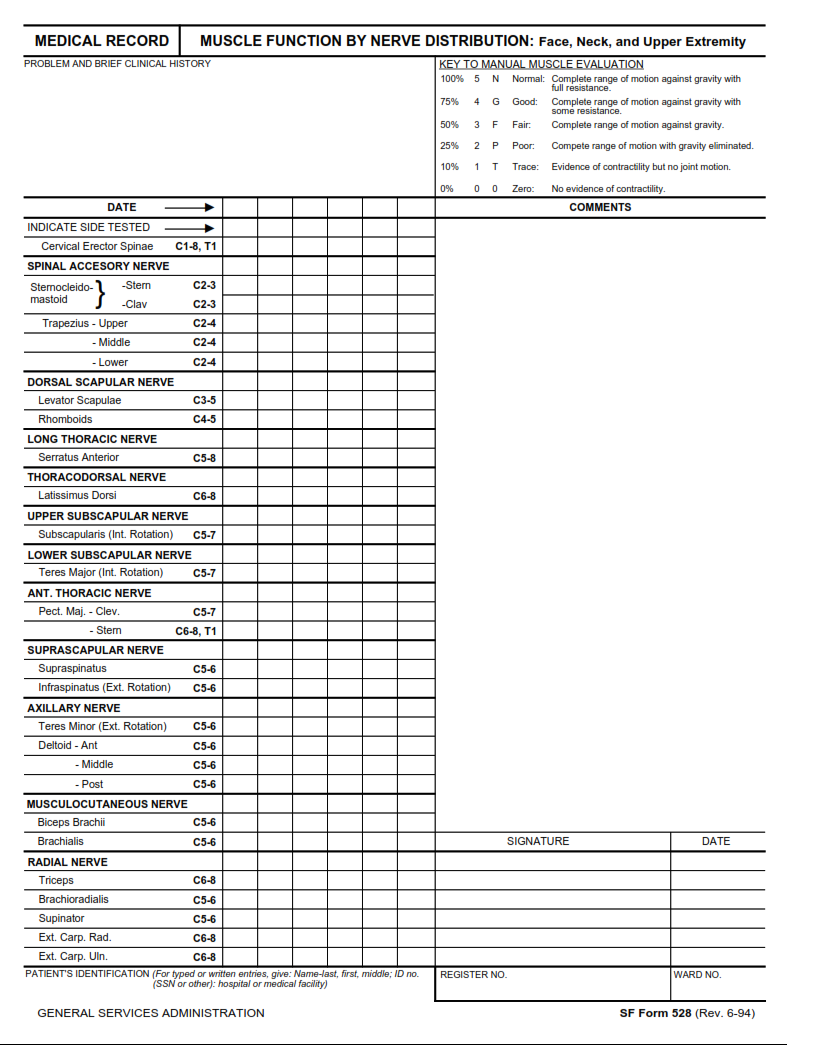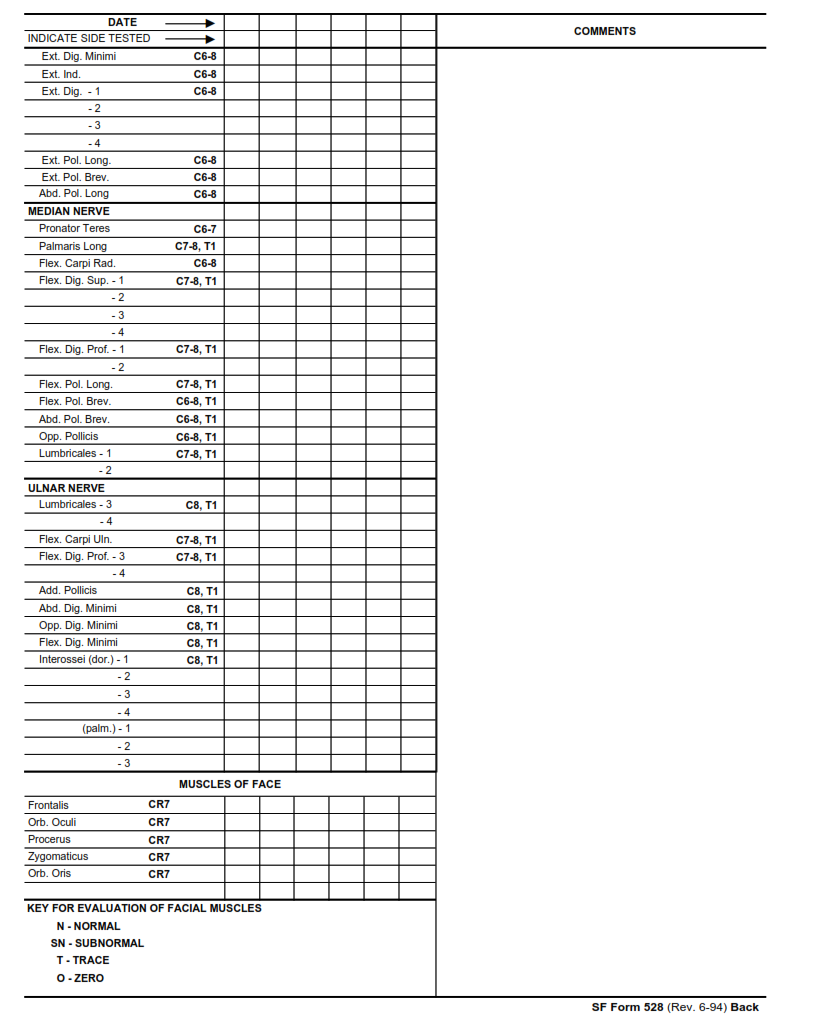SFFORMS.COM – SF 528 Form – Muscle Function By Nerve Distribution: Face, Neck, And Upper Extremity – The SF 528 form is a valuable tool that helps healthcare professionals understand the relationship between muscle function and nerve distribution in the face, neck, and upper extremity. This information can be used to diagnose and treat a wide range of conditions that affect these areas, including nerve injuries, muscle strains, and degenerative disorders.
Download SF 528 Form – Muscle Function By Nerve Distribution: Face, Neck, And Upper Extremity
| Form Number | SF 528 Form |
| Form Title | Muscle Function By Nerve Distribution: Face, Neck, And Upper Extremity |
| File Size | 553 KB |
| Date | 06/1994 |
What is a SF 528 Form?
The SF 528 form is a standardized document used to assess the muscle function of an individual by nerve distribution. Specifically, this form evaluates the muscle function of the face, neck, and upper extremities. This assessment is especially important for individuals who have suffered from a neurologic injury or disease, as it can help healthcare professionals determine the extent of their condition.
When completing the SF 528 form, healthcare providers will evaluate various movements and reflexes in these areas of the body. For example, they may look at how well a patient can raise their arms above their head or move their fingers individually. They may also test reflexes in the bicep or tricep muscles to see if there are any abnormalities.
Overall, the SF 528 form provides valuable information about an individual’s muscle function and helps guide healthcare professionals in developing treatment plans that address any deficits found during evaluation.
What is the Purpose of SF 528 Form?
The SF 528 Form is a document used for assessing the muscle function of patients, specifically in the face, neck, and upper extremities. This form is commonly used by healthcare professionals to evaluate their patients’ nerve distribution throughout these areas of the body. It is an essential tool that aids in diagnosing several conditions such as nerve injuries, strokes, and muscular dystrophy.
The SF 528 Form consists of a series of tests that help medical practitioners identify specific issues with nerve distribution and muscle function. These tests include evaluating facial movements such as smiling or frowning, testing grip strength in the hand and wrist region, assessing range of motion in the neck area, among others. Based on these assessments, doctors can develop an effective treatment plan for their patients to improve their overall quality of life.
Overall, the purpose of the SF 528 Form is to provide healthcare professionals with crucial information about their patient’s muscle function by analyzing nerve distribution throughout specific regions of their body. With this information at hand, doctors can accurately diagnose underlying medical conditions and create personalized treatment plans tailored to each patient’s unique needs.
Where Can I Find a SF 528 Form?
The SF 528 form is a crucial document that records the muscle function by nerve distribution of the face, neck, and upper extremity. This form is used as part of a comprehensive physical examination to assess the strength and mobility of these areas. If you need to complete this form for yourself or someone else, it’s important to know where to find it.
One of the easiest ways to access the SF 528 form is through your healthcare provider. They should have copies available in their office or be able to provide you with a copy upon request. You can also search for the form online on government websites such as Forms.gov or through military health services.
Another option is to reach out to your local VA medical center if you’re a veteran or have family members who served in the military. They’ll be able to assist you in obtaining an SF 528 form if needed. Overall, there are various ways to obtain an SF 528 Form – Muscle Function By Nerve Distribution: Face, Neck, And Upper Extremity; it’s just up to you which one works best for your situation.
SF 528 Form – Muscle Function By Nerve Distribution: Face, Neck, And Upper Extremity
The SF 528 Form is an essential tool in the field of physical therapy, as it helps therapists to assess muscle function by identifying which nerves are responsible for specific movements. In this article, we will be focusing on the nerve distribution of the face, neck, and upper extremities.
The facial nerve (CN VII) innervates muscles involved in facial expression, including the orbicularis oculi muscle responsible for closing the eyelids and the zygomaticus major muscle associated with smiling. The trigeminal nerve (CN V) supplies sensation to the face and also controls chewing muscles such as the masseter and temporalis. The accessory nerve (CN XI) provides innervation to the upper trapezius and sternocleidomastoid muscles that control head movement.
Moving down to the neck region, we have nerves such as the cervical plexus that innervate platysma muscle responsible for pulling down lower lip. Additionally, the brachial plexus gives rise to nerves that provide motor and sensory signals to arm muscles like biceps brachii serving elbow flexion while the radial nerve serves wrist extension. Understanding these complex neural pathways can help therapists diagnose and treat various conditions related to neuromuscular dysfunction in patients.
SF 528 Form Example

